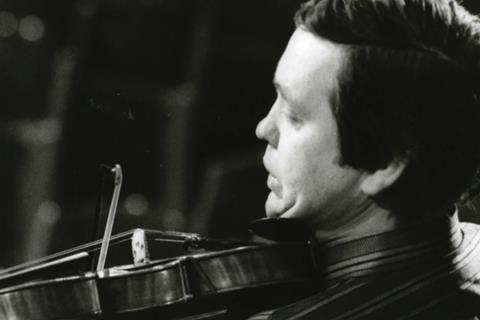Alfred Staar’s influence continues to be felt today – no fewer than 22 of his former students currently hold posts in the Vienna Philharmonic. Inga Brandini shares a conversation with the professor from 15 March 2000, shortly before his death a month later

The following extract is taken from The Strad’s April 2019 issue, available to download here. To order the print edition, click here
Inga Brandini Professor Staar, in your opinion, are the different national schools of violin playing – French, Franco– Belgian, Hungarian, Czech, Viennese, Russian, American – still relevant or is there now a worldwide tendency towards a ‘uniform international school’?
Alfred Staar The concept of ‘school’ is of great importance – especially for the Vienna Philharmonic. It often happens that the Vienna Philharmonic cannot hire outstanding musicians for the simple reason that they have a different style of performing – a completely different form of tone production and a different bowing technique.
I don’t claim that such a style of performance is worse or better; rather, that it is fundamentally different. Twenty-one of my students perform with the Vienna Philharmonic [at the time] and all play with a similar style, making the sound homogeneous. If we were to take diverse musicians from anywhere, who did not share common training, that would alter the homogeneity and uniqueness of our sound.
Unquestionably, there are differences between the different schools: anyone who thinks that violin performance can be reduced to one notion or school in my opinion has no understanding of violin performance or doesn’t know what tradition means.
We have one of the most prominent orchestras in the world, the Vienna Philharmonic, but we have no prominent soloists. That is interesting.
IB Do you consider yourself an emissary of the Viennese tradition of violin performance?
AS I am a typical representative of the so-called Viennese school. People who want to hear how I teach – eminent violinists from England and America – come to me because they say that when I’m no longer around they will not be able to witness and hear this typical Viennese musicality.
Most other teachers don’t have the same deep-seated connection to Vienna that I do. That’s because I am a typical member of the Vienna Philharmonic and cut my teeth in the orchestra from the age of 16. I am attempting to pass on, in the truest sense, the best tradition of the Vienna Philharmonic.

IB What makes the Viennese string sound unique?
AS We prefer a specific type of bowing technique that is particularly well suited to orchestral playing, but probably less appropriate for solo performance. There is a more brilliant style of performance among international solo artists. The Viennese school has produced relatively few renowned soloists, except for Fritz Kreisler and a few others.
IB Wolfgang Schneiderhan?
AS Yes, Kreisler and Schneiderhan are the poster children. But we have a very important chamber music tradition in which the many possibilities of phrasing, the exuberance of expression and animation, and a rapport with the audience all combine to create a unique atmosphere.
However, this style of playing is less well suited to solo performance. We have one of the most prominent orchestras in the world, the Vienna Philharmonic, but we have no prominent soloists. That is interesting. In Russia, at least ten years ago, there were so many fantastic solo performers, but few prominent orchestras apart from the Leningrad Philharmonic Orchestra [today’s St Petersburg Philharmonic Orchestra]. In the end, it’s the tone quality of an orchestra that makes the difference.
Read the full interview in The Strad’s April 2019 issue, available to download here. To order the print edition, click here
Reference










































No comments yet